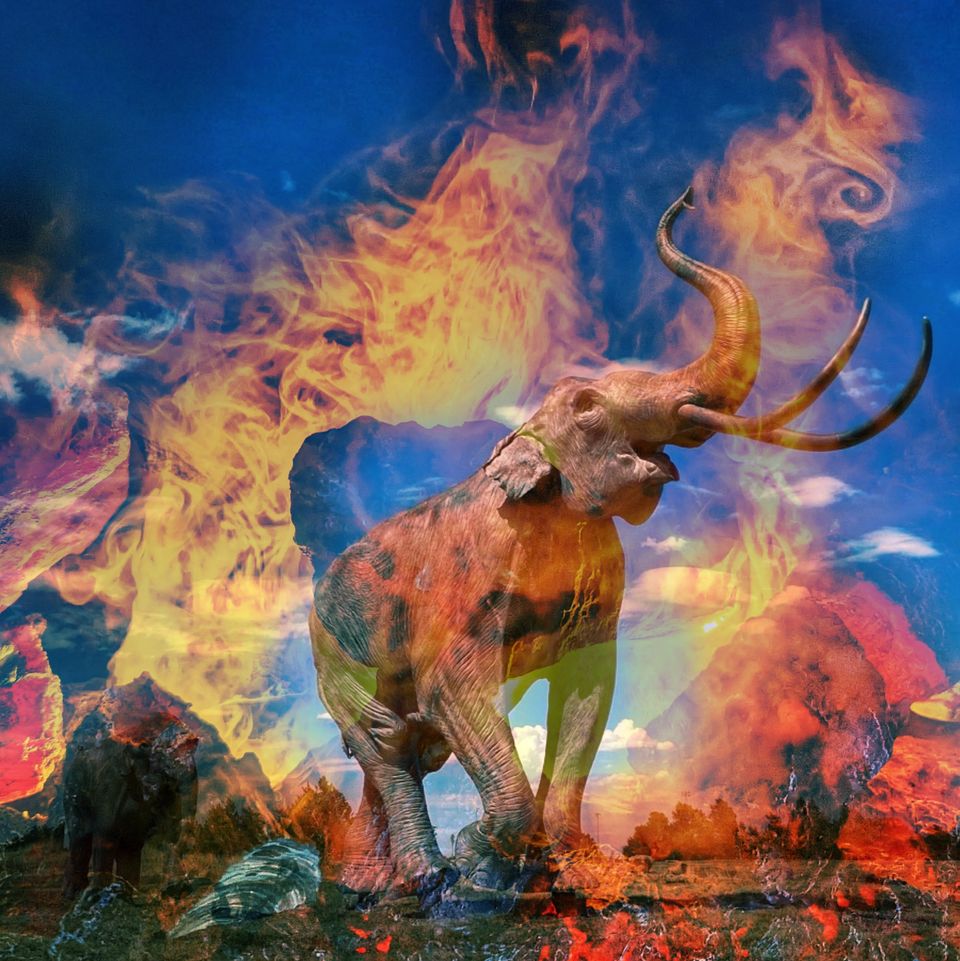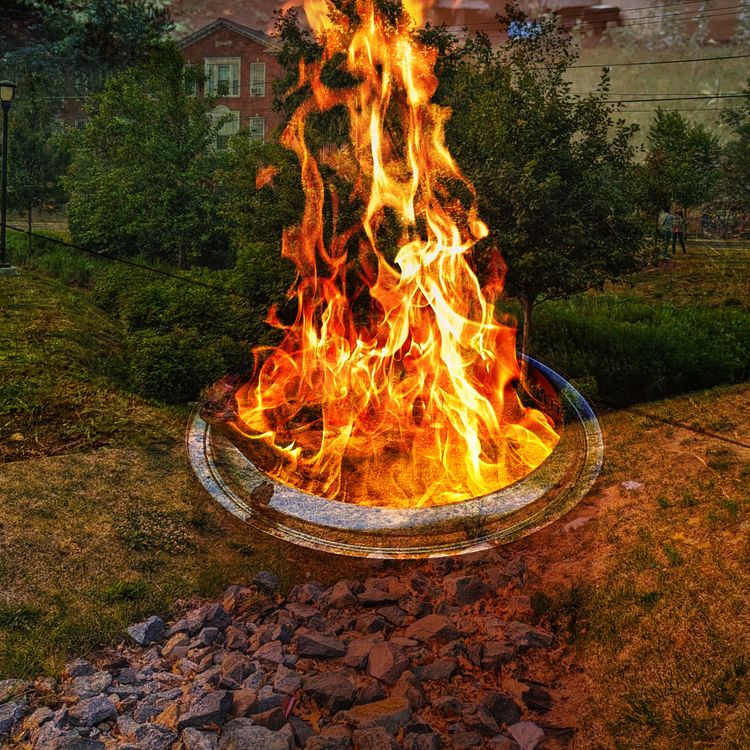How To Cook A Mammoth

For tens of thousands of years, luckless mammals traversing the area of what is now downtown Los Angeles encountered a deadly trap: thick, gooey pits of asphalt, often covered by leaves and debris, which trapped their feet and sucked them in. Trapped prey and tempting carcasses inevitably attracted predators; they found themselves mired, too. The bones of three species of giant ground sloths lay jumbled with those of bison and short-faced bears, dire wolves and American lions, mammoths and saber toothed cats.
Their loss — and folks, what a way to die — was science’s gain. When paleontologists began to excavate the La Brea tar pits in the early 20th Century, they pulled out the bones of a disarticulated menagerie of vanished Pleistocene life. For early researchers, the discovery of these species — which once clomped and stalked across what is now L.A.’s Miracle Mile — posed a question: if they were once here, where did they go?
The answer is thornier than it sounds.
Welcome to Heat Death, the newsletter that puts the point in "Clovis." In the aftermath of our (quite popular!) interview with John Vaillant on the coming age of fire, we've got megafauna on the brain. Asher has been traversing the vast and rolling landscape between Waco and Lubbock in search of Texas' lost Pleistocene faunas, visiting places like The Waco Mammoth Site and Lake Lubbock National Monument, both of which have produced their fair share of lost creatures.
The question of the mega-faunal extinction remains a deeply contentious one. Initially, a climactic cause was suggested. But for much of the 20th Century, the answer was a bit of Modernist boosterism — the Overkill Hypothesis, which was the kind of contrite explanation that looks, in a certain light, a lot like pride. The idea goes like this: H. sapiens swept out of Africa like a biological blitzkrieg, devastating the naïve megafauna in every location they invaded. Goodbye, giant monitor lizards and wombats in Australia. Au revoir, ground sloths, wooly rhinos and Irish elks of Europe. Where did the mammoths go? Ah, well, we killed them all with spears. (In our defense, we were just so very hungry.)
There have – increasingly – been problems with this hypothesis, or at least this particular telling of it. For one thing, recent paleontological finds over the past decade have seriously pushed back the arrival dates of humans in North America, and pretty much everywhere else besides. Rather than humans appearing and megafauna disappearing in rapid succession, we seem to have lived alongside many of these animals for thousands of years before extinctions began. Hardly a blitzkrieg, in other words. On the other hand, the Pliocene and Pleistocene were remarkably tempestuous epochs, climatically speaking: megafauna seem to have largely sailed through these roller coaster temperatures without a great deal of issues.
So what gives? A recent paper in Science offers a new wrinkle, noting that many of America's megafauna went extinct in Southern California at least a millennium before they died-off on the rest of the continent. In that paper, scientists offer a surprisingly contemporary reason for that early departure: the dawn in that region of a new age of fire, which is with us to this day.
As Saul covered this for The Hill, he sat down with archeologist Robin O’Keefe of Marshall University to discuss the paper and its findings. When O'Keef found out Saul was a political reporter, he got the first question.
We'll launch right in. This is Heat Death. Stay with us.





